
Monday Morning Quarterbacking Won’t Fix Yesterday’s Downtime
Every Buffalo Bills fan knows the feeling: Monday morning quarterbacking. After a tough Sunday loss, everyone has an opinion on what should have happened. “They
Automotive
Versatech Increased OEE 30%
Consumer Package Goods
Oral Biotech Eliminated Scrap
Food/Beverage
Louisiana Fish Fry Increases OEE 12%
Metal Stamping
H&T Waterbury Reduced Downtime 71%
Blow Molding
Lyons Blow Molding Automated Reporting & Labeling
Selecting the right production monitoring system can be a complex task. This comprehensive guide will cover what production monitoring is, its function in manufacturing, ROI factors and additional resources.
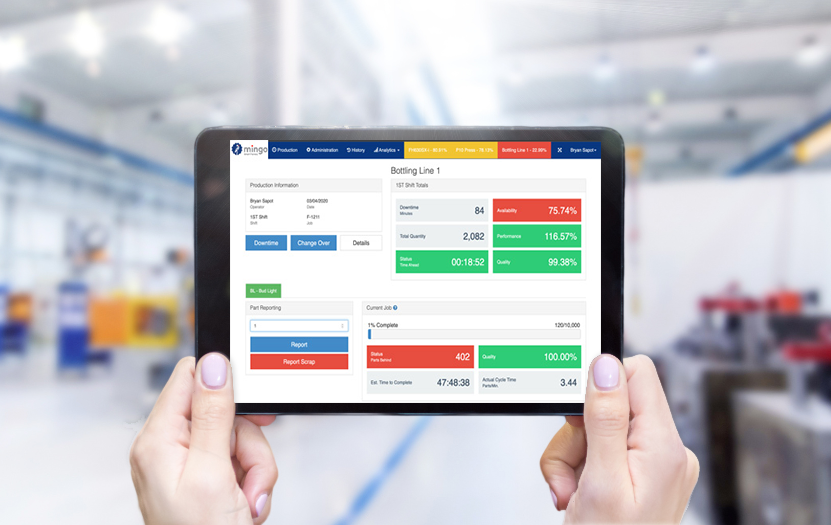
Production monitoring is the heartbeat of modern manufacturing, providing real-time insights into every facet of production processes. It involves the continuous collection and analysis of data from various sources on the factory floor, including machines, sensors, and production lines.
By visualizing this data in real-time, manufacturers gain invaluable insights into machine performance, production efficiency, and resource utilization. This real-time visibility enables proactive decision-making, allowing manufacturers to identify and address issues promptly, minimize downtime, optimize processes, and ultimately enhance productivity and profitability. In essence, production monitoring serves as the guiding light, illuminating the path to operational excellence in the manufacturing industry.
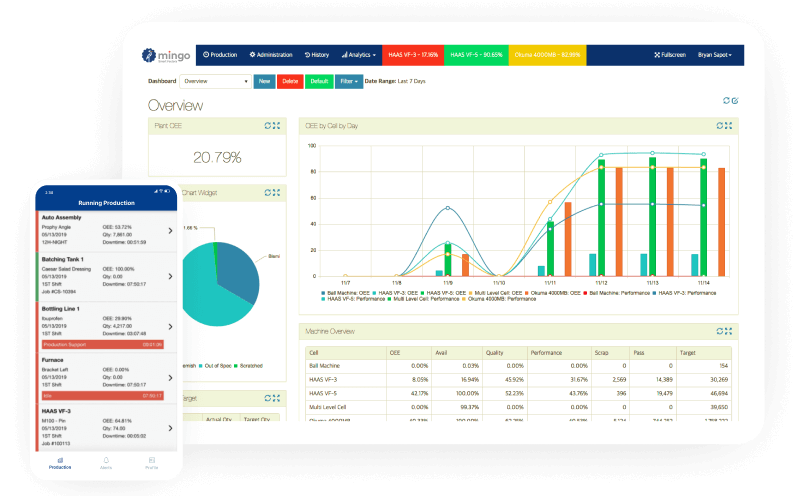
Take a deeper diver into the role of production monitoring within various manufacturing industries.
Ready to get started? With the right data and the right tools to visualize data, production monitoring can connect your machines and empower you to help solve many of the manufacturing challenges affecting productivity.
Before diving into the selection process, it’s essential to have a clear understanding of what production monitoring systems are. A production monitoring system (PMS) is a software application that collects and analyzes data from the production process in real-time. These systems are designed to collect, analyze, and visualize data from various stages of the production process. By monitoring key performance indicators (KPIs) in real-time, such as production output, quality metrics, and machine utilization, manufacturers can identify bottlenecks, trends, and areas for improvement.
Production monitoring systems play a crucial role in modern manufacturing, where efficiency and quality control are paramount. These systems are typically integrated with manufacturing equipment and systems, such as programmable logic controllers (PLCs) and enterprise resource planning (ERP) systems. Through real-time data collection and analysis, these systems provide actionable insights for optimizing production efficiency and minimizing downtime.
Production monitoring systems are software applications or platforms that track and analyze data related to the production process. They go beyond simple data collection and provide comprehensive insights into the entire production ecosystem. From raw material input to finished product output, these systems capture and analyze data at every stage.
For example, let’s consider a manufacturing facility that produces electronic devices. A production monitoring system in this context would collect data on factors such as the number of units produced per hour, the rate of defective units, and the utilization of each machine on the production line. By analyzing this data, the system can identify patterns, correlations, and anomalies that may impact production efficiency and quality.
Some common data collection methods include:
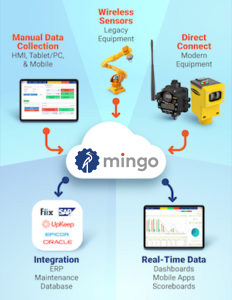
Production monitoring is an essential tool for any business that wants to improve its production process. The best way to monitor production will vary depending on the specific needs of the business. However, all methods of production monitoring can provide valuable insights that can be used to improve the production process.
By collecting and analyzing data about the production process, businesses can identify and address problems before they cause major disruptions. This can lead to improved efficiency, reduced downtime, enhanced quality control and data-driven decision making.
Accurate data on machine utilization and downtime helps businesses allocate resources more efficiently and reduce idle time. By analyzing machine utilization patterns, the system can identify machines that are underutilized or prone to breakdowns, allowing businesses to take proactive measures to optimize resource allocation and minimize downtime.
By providing reliable, up-to-date information, production monitoring systems enable businesses to make informed decisions based on real-time insights. For example, if the system detects a decline in production output, it can generate reports and visualizations that highlight the potential causes, enabling management to make data-driven decisions to address the issue and improve overall performance.
Reduce time spent on manual processes and data collection, providing employees the opportunity to use their skills on more important tasks.
Track trends in your data so you can see, over time, how your plant is running. Look at throughput and performance by shift to look for opportunities for improvement.
By constantly monitoring and analyzing production data, businesses can identify inefficiencies, streamline processes, and reduce waste. For example, if the system detects a bottleneck in the production line, it can alert the appropriate personnel, who can then take corrective actions to eliminate the bottleneck and improve overall efficiency.
Production monitoring systems enable real-time monitoring of quality metrics, allowing businesses to identify defects early and take corrective actions. For instance, if the system detects an increase in the number of defective units, it can trigger an alarm, prompting the quality control team to investigate the issue and implement necessary measures to maintain product quality.
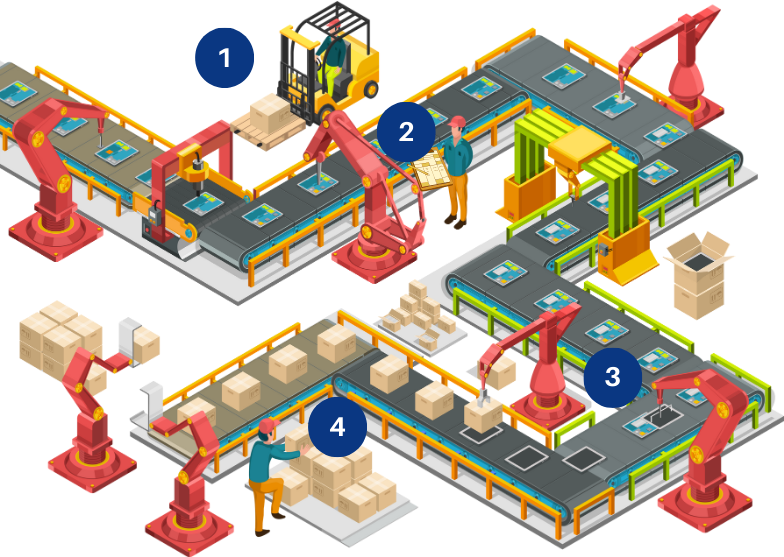
When evaluating different production monitoring systems, it’s important to consider their key features. These features can significantly impact the system’s effectiveness and suitability for your business. Here are some essential features to look for:
An effective production monitoring system should offer real-time data collection capabilities. This ensures that you have access to accurate and up-to-date information about production processes. Real-time data allows you to identify issues as they arise, enabling timely intervention and corrective actions.
For example, imagine you’re a manufacturer of electronic devices. With a production monitoring system that provides real-time data collection, you can monitor the performance of each assembly line in real-time. This means that if there is a sudden increase in defects or a drop in production efficiency, you will be immediately notified. This allows you to take immediate action, such as adjusting the production parameters or allocating additional resources to address the issue.
Furthermore, real-time data collection also enables you to track the progress of each production order. You can see how many units have been produced, how many are in progress, and how many are yet to be started. This level of visibility allows you to better manage your production schedule and meet customer demands more effectively.
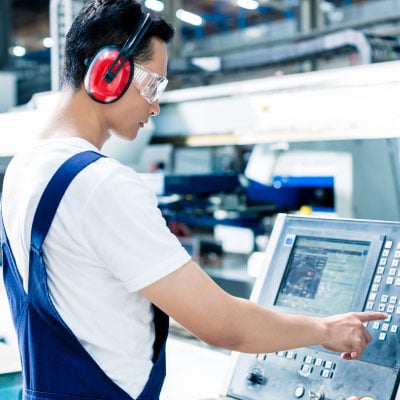
One of Mingo Smart Factory’s customers had marked a machine for maintenance on a Friday because there was a defect in the finished product. The manager received a mobile alert on Saturday morning that the machine had been turned on by the weekend crew. They were able to contact the shift manager and prevented thousands of dollars of materials from becoming wasted.
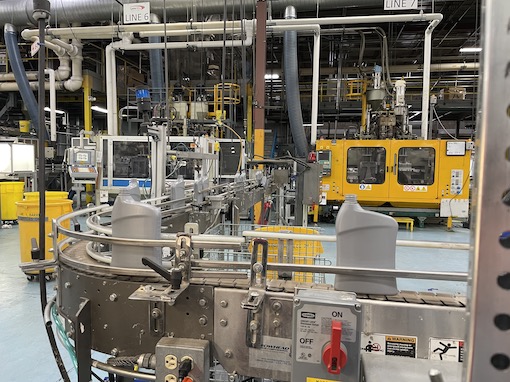
Another important feature is a user-friendly interface. The system should be intuitive and easy to navigate, allowing operators and managers to access information quickly and efficiently. A well-designed interface enhances user experience, making it easier to analyze data, generate reports, and take actions based on insights.
Let’s say you’re a production manager responsible for overseeing multiple production lines. With a user-friendly interface, you can easily navigate through the system to access specific information about each line. You can view real-time production data, such as the current production rate, the number of units produced, and any quality issues reported. This allows you to quickly identify bottlenecks or areas that require attention.
In addition, a user-friendly interface also enables you to generate customized reports. You can easily filter and analyze data to gain insights into production trends, identify areas for improvement, and make data-driven decisions. This level of accessibility and usability empowers your team to take proactive measures to optimize production processes and improve overall efficiency.
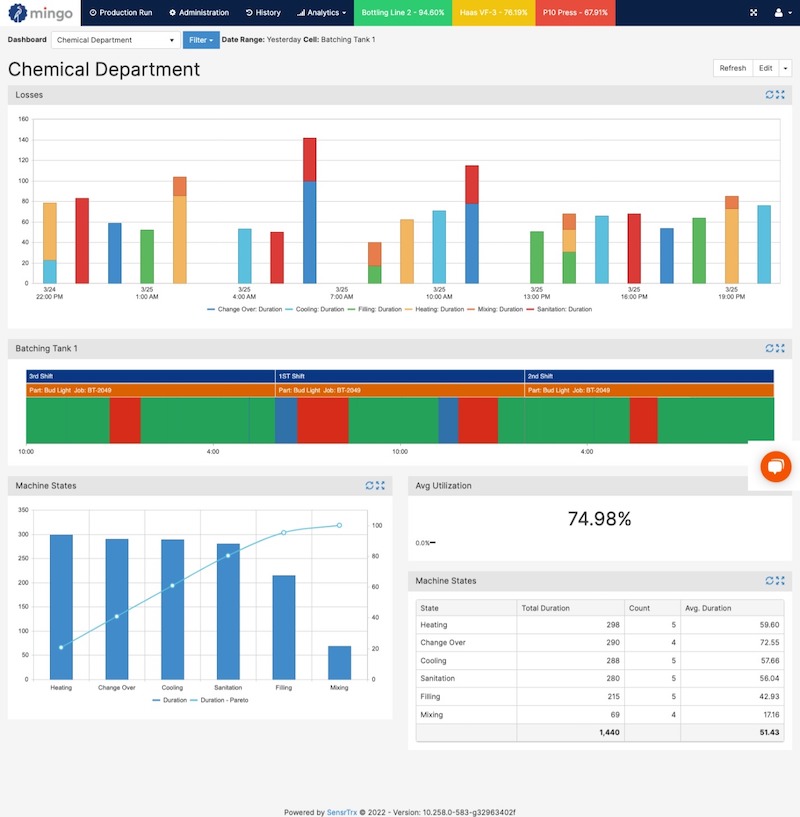
Scalability and flexibility are crucial considerations, especially for growing businesses. The production monitoring system should be able to adapt to changing requirements and accommodate expanding operations. It should also have the capability to integrate with other systems, such as ERP or MES (Manufacturing Execution Systems), to ensure seamless data flow across the organization.
Imagine your business experiences rapid growth, and you need to add new production lines or expand your manufacturing facilities. A scalable production monitoring system allows you to easily incorporate these changes without disrupting the existing monitoring processes. You can simply add new sensors or devices to the system and configure them to collect data from the new production lines.
Furthermore, the flexibility of the system enables you to customize it to suit your specific needs. You can define key performance indicators (KPIs) that align with your business goals and monitor them accordingly. The system can also be integrated with other systems, such as your ERP, to ensure that production data is seamlessly shared across different departments. This integration eliminates manual data entry and reduces the risk of errors, enabling better decision-making and streamlining overall operations.
By considering these key features when evaluating production monitoring systems, you can choose a system that aligns with your business requirements and empowers you to optimize production processes, improve efficiency, and drive growth.
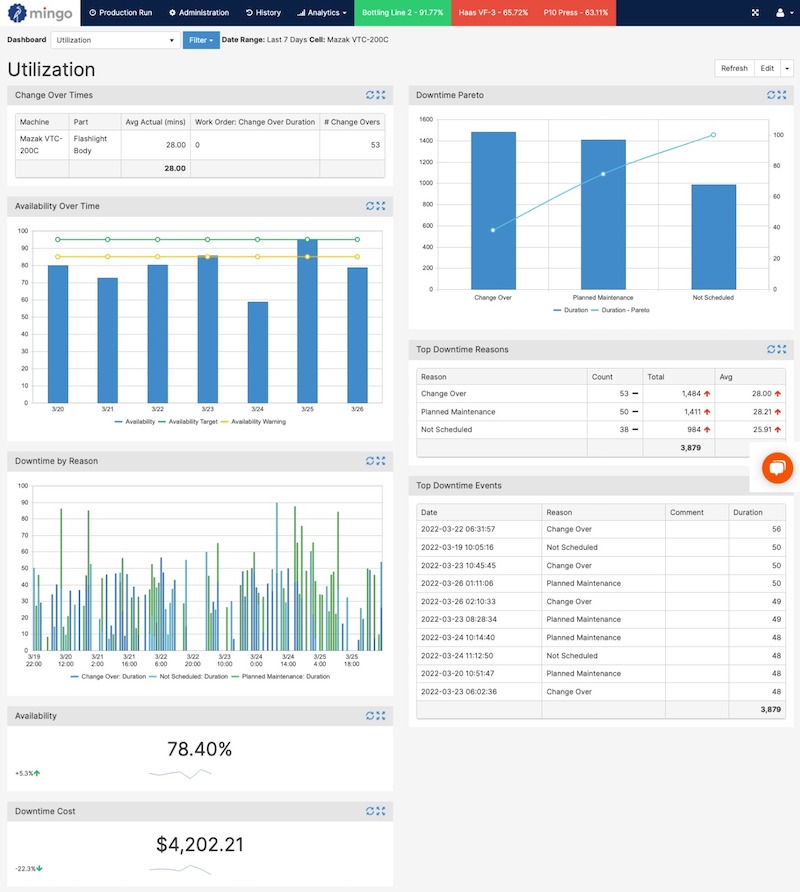
Inventory accuracy was something that Bishop always wanted for his financial figures but he knew that any data had to be intrinsically tied to the production reporting accuracy.
“Six months before we had Mingo it was, ‘I’m gonna make an 80,000 piece adjustment to our inventory to get this back in line with what’s actually out there.’ We did a physical inventory recently for plant one in our main location where we installed Mingo first.” Ice Industries found that their reporting was now, “accurate to the part and to the pound of steel.
We make small parts, we make big parts, we make heavy parts. From an account standpoint, for everything to be on to the part to the pound of steel, was almost shocking to me. It was nothing like we were doing years before this.”
Selecting the right software can be a difficult process. A 2023 Capterra survey of 3,400 business found that 58% of them regret a recent software purchase. 38% of respondents who regretted their software purchase said that it made them less productive and 36% complained that the software was difficult to use. That’s one of the reasons why Mingo Smart Factory’s philosophy is to Start Simple. We want you to start using our sensors and reporting analytics on a percentage of your machines to see how well it works for your operators and management team before expanding it to the rest of the plant.
Manufacturing is ultimately about throughput, meeting customer demand on-time with a quality product at a price that makes the company money, and where the customer can see value. The goal is to reduce operational expense and inventory while simultaneously increasing throughput. This can be analyzed by examining dependent events and statistical fluctuations that happen daily on the factory floor.
Before starting the selection process, it’s essential to identify your specific business needs and requirements. Consider factors such as the size of your operation, industry regulations, and the specific metrics you need to monitor. This will help you narrow down your options and focus on systems that meet your unique needs.

Once you have a clear understanding of your requirements, it’s time to evaluate different production monitoring systems. Consider factors such as the system’s functionality, integration capabilities, ease of use, and vendor reputation. It’s also important to check for customer reviews and testimonials to gauge the system’s reliability and customer satisfaction levels.
Pros
Cons
Pros
Cons
Pros
Cons
While cost should not be the sole determining factor, it’s important to consider the financial implications of implementing a production monitoring system. Evaluate the system’s upfront costs, ongoing maintenance fees, and potential return on investment (ROI). Look for systems that offer value for money, save time for both managers and operators and have case studies that demonstrate a reasonable payback period.

H&T Waterbury reduced their micro stoppages by 71% and eliminated 18 hours of downtime after converting their data collection from manual reporting to Mingo Smart Factory. “Mingo helped us realize that our small micro stoppage problem was actually a bigger problem than we anticipated.”
– Matt Hill, Operations Improvement Coordinator, H&T Waterbury
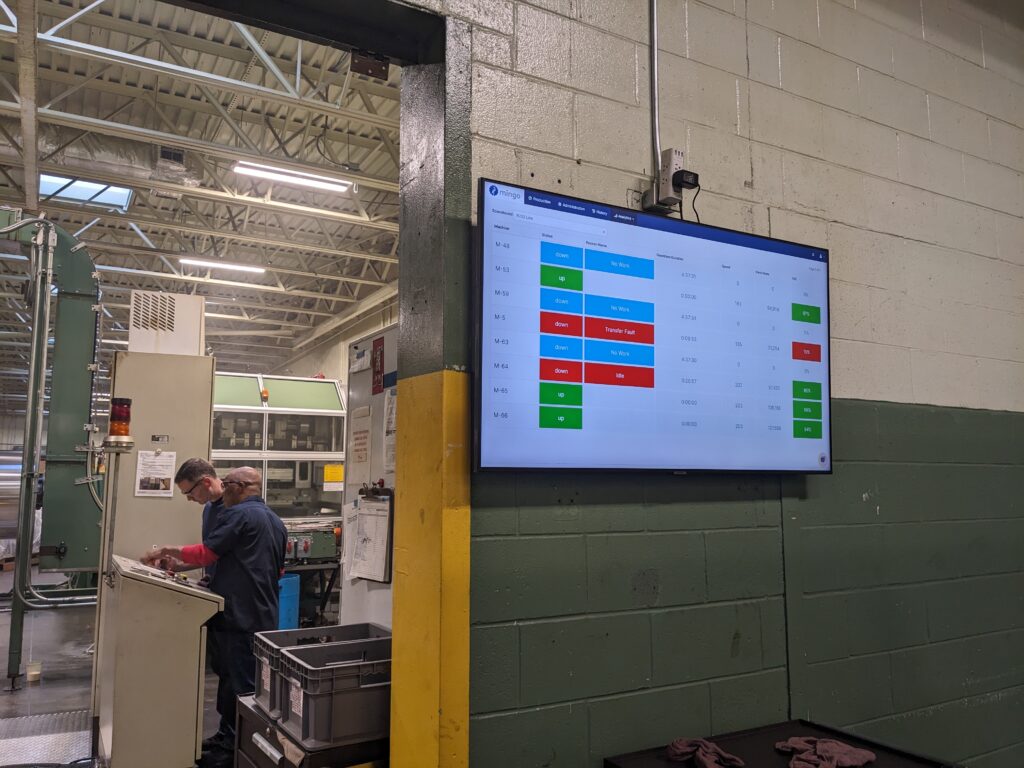
There are a variety of production monitoring systems available on the market, from a simple product that be used off the shelf to a complex solution that is built from the ground up to fit your needs. The best system for your business will depend on your specific needs and budget.
Here are some things to consider when choosing a production monitoring system:
Once you have chosen a production monitoring system, it is important to implement it carefully and train your employees on how to use it. With proper planning and implementation, a production monitoring system can be a valuable tool for improving your business’s efficiency and profitability.
There are a variety of production monitoring systems available on the market, from a pre-built solution to a custom-built system. The best system for your business will depend on your specific needs and budget.
Tacony saw a 9x ROI and 150% reduction in lead time after working with Mingo Smart Factory. “The real-time tracking towards a goal will tell you how many you’ve completed. You know from the minute you press the start button in the morning if you’re tracking towards your goal.”
– Ben Wohlschlaeger, Business Process Optimization Manager, Tacony

One of the emerging trends in production monitoring systems is the integration of artificial intelligence (AI) and machine learning technologies. These technologies can analyze vast amounts of production data to identify patterns, anomalies, and opportunities for improvement. By leveraging AI and machine learning, businesses can achieve even greater efficiency and productivity gains.
Another future trend is the incorporation of the Internet of Things (IoT) into production monitoring systems. IoT devices can collect data from various production equipment and transmit it in real-time to the monitoring system. With IoT-enabled production monitoring, businesses can achieve higher levels of automation, predictive maintenance, and overall operational efficiency.
By following this comprehensive guide, you will be well-equipped to select the right production monitoring system for your business. Remember to consider the core features, evaluate different options, and align your choice with your specific needs and goals. A well-chosen production monitoring system is a valuable asset that can drive significant improvements in your manufacturing processes and ultimately contribute to your business’s success.
Mingo Smart Factory is the easiest to use manufacturing productivity platform that provides real-time production monitoring on the factory floor, improves on-time delivery, and increases profitability of manufacturing companies. It is fast to deploy and easy to use.

Every Buffalo Bills fan knows the feeling: Monday morning quarterbacking. After a tough Sunday loss, everyone has an opinion on what should have happened. “They

The status quo in manufacturing often feels safe — the way things worked yesterday will likely work again today. But when it comes to OEE

Consumer Packaged Goods (CPG) manufacturers operate in a fast-paced environment defined by fluctuating demand, tight margins, and constant pressure to deliver on time. Whether producing
Built by people who know manufacturing, Mingo Smart Factory provides the 21st century “Smart Factory” experience that manufacturers need to grow in a modern environment. See how it can help you drive revenue.
© Copyright 2025 Mingo Smart Factory » Privacy